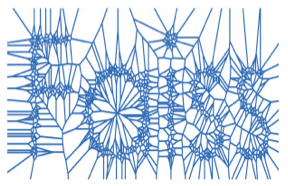Turbocharging Artificial Intelligence With NGD Systems Computational Storage
We have all seen demonstrations of the capabilities of Artificial Intelligence (AI)-based imaging applications, from facial recognition to computer vision assisted  application platforms. However, scaling these imaging implementations to Petabyte-scale for real-time datasets is problematic because:
application platforms. However, scaling these imaging implementations to Petabyte-scale for real-time datasets is problematic because:
- Traditional databases contain structured tables of symbolic information that is built like a table with each image having a row in the index. The tables are then cross-linked and mapped to added indexes. For performance reasons, these index tables must be maintained in memory.
- Utilizing traditional implementations for managing datasets requires that data be moved from storage to server memory, after which the applications can analyze the data. Since these datasets are growing to Petabyte scale, the ability to analyze completedatasets in a single server’s memory set is all but impossible.
Utilizing brute-force methods on modern imaging databases, which can be in the petabyte-size range, is often both incredibly difficult and enormously expensive. This has forced organizations with extremely large image databases to look for new approaches to image similarity search and more generally to the problem of data storage and analysis.
To read the whole pager, please fill in below details.
Error: Contact form not found.
4 comments so far
How to kill yourselfPosted on5:22 am - Apr 8, 2025
Suicide is a tragic phenomenon that impacts many families worldwide.
It is often associated with psychological struggles, such as anxiety, trauma, or substance abuse.
People who contemplate suicide may feel isolated and believe there’s no solution.
how-to-kill-yourself.com
Society needs to talk openly about this matter and help vulnerable individuals.
Prevention can reduce the risk, and talking to someone is a crucial first step.
If you or someone you know is thinking about suicide, don’t hesitate to get support.
You are not forgotten, and support exists.
casino gamesPosted on7:51 pm - Apr 12, 2025
This website, you can access a wide selection of slot machines from top providers.
Visitors can try out retro-style games as well as feature-packed games with vivid animation and exciting features.
Whether you’re a beginner or a seasoned gamer, there’s a game that fits your style.
money casino
Each title are instantly accessible 24/7 and designed for desktop computers and tablets alike.
No download is required, so you can get started without hassle.
Platform layout is intuitive, making it simple to find your favorite slot.
Sign up today, and enjoy the thrill of casino games!
pin-upPosted on11:38 pm - May 16, 2025
Here, find a wide range of online casinos.
Interested in classic games latest releases, you’ll find an option for any taste.
Every casino included checked thoroughly for trustworthiness, allowing users to gamble with confidence.
pin-up
Moreover, the site unique promotions along with offers for new players including long-term users.
Due to simple access, discovering a suitable site happens in no time, making it convenient.
Be in the know about the latest additions through regular check-ins, as fresh options appear consistently.
casinoPosted on5:27 pm - May 17, 2025
Here, find a variety of online casinos.
Interested in classic games new slot machines, there’s something for every player.
The listed platforms are verified for trustworthiness, so you can play securely.
gambling
Additionally, the site offers exclusive bonuses and deals targeted at first-timers and loyal customers.
Thanks to user-friendly browsing, finding your favorite casino is quick and effortless, making it convenient.
Be in the know regarding new entries with frequent visits, since new casinos appear consistently.
About the author